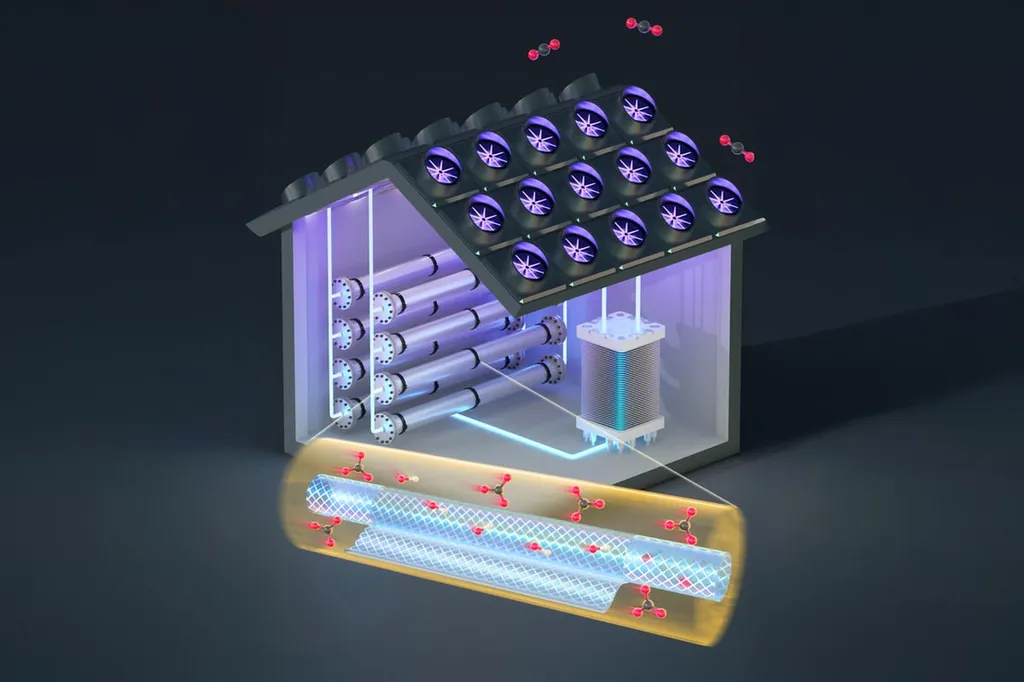In a significant stride towards combating climate change, researchers have developed an innovative membrane that could revolutionize carbon dioxide (CO2) capture from power plants. The study, published in the journal “Advanced Membranes,” presents a novel approach to utilizing ionic liquids (IL) in a graphene oxide (GO) and carbon nanotube (CNT) network, offering a promising solution for efficient and scalable CO2 separation.
The research, led by Dinesh K. Behera from the Department of Chemical and Biological Engineering at the State University of New York, University at Buffalo, addresses key challenges in IL-based membranes. Traditional methods often struggle with the porous structure required for loading IL and the loading procedure itself. Behera and his team have tackled these issues by designing an ultrathin, 2-dimensional composite network comprising GO sheets intercalated with CNTs. This hybrid network spatially confines the IL, enhancing its stability and facilitating faster transport of CO2.
The membrane utilizes 1-ethyl-3 methylimidazolium tetrafluoroborate ([EMIM][BF4]) as the active separating medium. The GO/CNT network stabilizes the IL within nanochannels due to interactions between the IL cations and the negatively charged functional groups on GO. The incorporation of CNTs increases the number of nanochannels, significantly boosting CO2 permeance.
“Our approach provides a modified strategy of using ionic liquids in the solution form, as opposed to most studies using the pure form,” Behera explained. This method yields a CO2 permeance of approximately 600 GPU, which is one order of magnitude higher than reported membranes employing the same ionic liquid, and a CO2/N2 selectivity of 62 under humid conditions and elevated temperatures (up to 80 °C).
The implications for the energy sector are substantial. Membrane-based separation processes are known for their cost-effectiveness, robustness, and energy efficiency. The development of this advanced membrane could significantly enhance the feasibility of capturing CO2 from power plants, a major contributor to atmospheric CO2 emissions. By improving the efficiency and scalability of CO2 capture, this technology could play a crucial role in mitigating climate change.
The research not only addresses current challenges in IL-based membranes but also paves the way for future advancements in the field. As Behera noted, “This study opens up new possibilities for designing and fabricating high-performance membranes for various separation applications.” The findings could inspire further innovation in membrane technology, leading to more effective and sustainable solutions for CO2 capture and other industrial processes.
In summary, this groundbreaking research offers a scalable and efficient method for CO2 capture, with significant potential to impact the energy sector and contribute to global efforts in combating climate change. The study, published in the journal “Advanced Membranes,” represents a major step forward in the development of advanced membrane technologies for a sustainable future.

